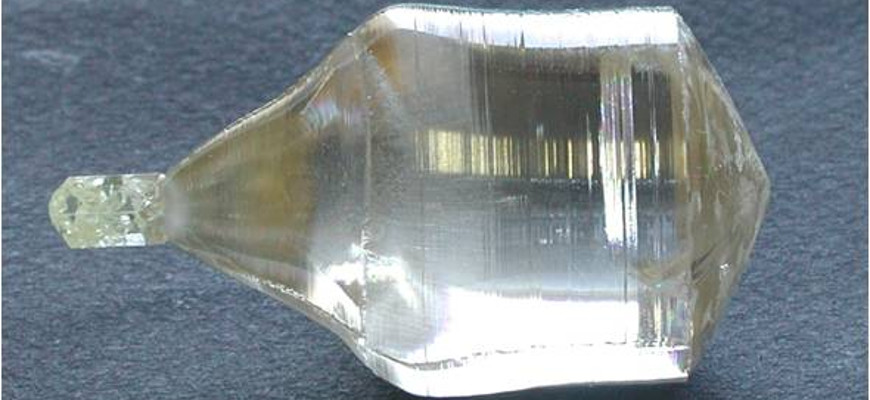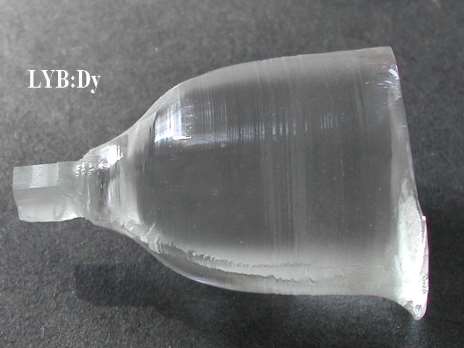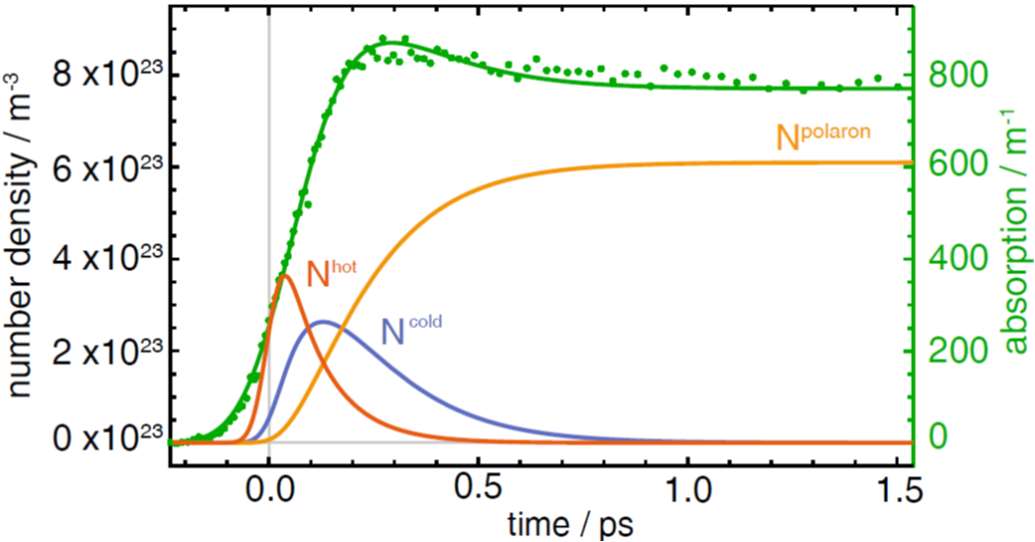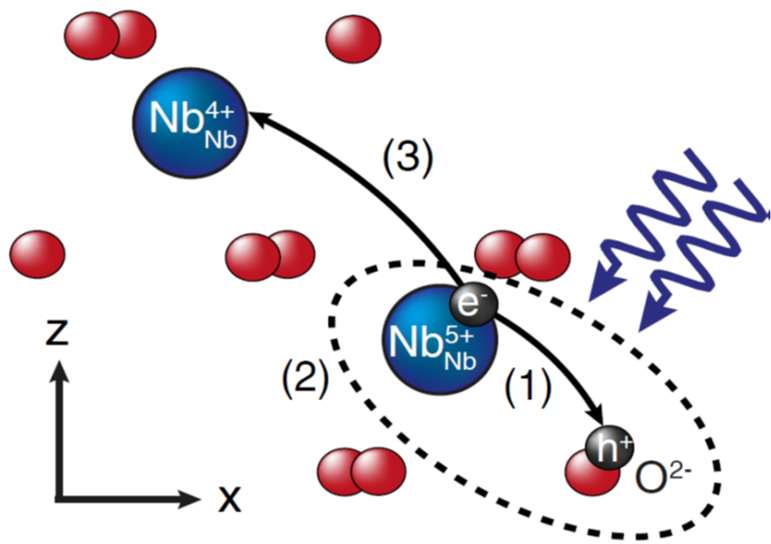Crystal Physics Research Group

Group leader: László Kovács
Webpage:: https://wigner.hu/en/applied-and-nonlinear-optics-research/crystal-physics-research-group
Crystal growth of niobates. — A series of Fe+Ti double-doped stoichiometric LiNbO3 (LN)
crystals has been grown to optimize/balance photorefractive and wave-guiding properties.
Rare-earth (Er, Nd, Yb) and transition-metal (Fe, Ti) doped over-threshold stoichiometric LN
crystals have been grown for IR spectroscopic studies showing that these dopants (M) may
also incorporate at Nb sites forming MNb ‒ OH‒ -type complexes like optical-damageresistant
(Mg, Zn, In, Sc, Hf, Zr, Sn) ions.
Spectroscopy of lithium yttrium orthoborate (Li6Y(BO3)3, LYB) single crystals. — Czochralski
grown LYB:Dy crystals suitable for scintillator and laser communication systems (Fig. 1) have
been characterized by temperature and polarization dependent FTIR absorption and
luminescence measurements. Up to the 4I15/2 multiplet, all Stark levels split by lowsymmetry
crystal field could be determined. The most intense luminescence was detected
at 577 nm (4F9/2 → 6H13/2 transition).

Figure 1. High optical quality LYB crystal doped with Dy.
Coherent Yb-pair emission in Li6Y1-xYbx(BO3)3 crystals
(x=0.01, 0.05, 0.20) was successfully generated using laser
excitation at 972 nm. At 6 K, the emission showed a
detailed structure containing at least 13 band components
in the 470-540 nm range. The laser intensity dependence
of the integrated area of the spectra was explained by an
energy transfer mechanism via Yb3+ chains in the crystal lattice.
Spectroscopy of the tissue-equivalent dosimeter material lithium tetraborate (LTB). —
Luminescence studies of Mn doped LTB single crystals complemented by EPR analysis in the
33 GHz Q-band revealed rechargeable Mn2+ centres incorporated in the lithium sublattice,
compensated by mobile lithium vacancies. Both electrons and holes created by ionising
radiation are trapped by Mn2+ centres, their recombination accounting for the
thermoluminescent readout of the radiation dose.
Spectroscopy of LiNbO3:Yb nano-powders. — LN nano-powders have been prepared by
high-energy ball milling from bulk crystals, using alumina, steel or tungsten carbide vials.
The type of mills, number of balls (1 or 2), milling time and the ball-to-powder ratio has
been varied to produce the smallest grain size. After resonant irradiation at λ=980 nm, a
fluorescent signal with a lifetime of 0.5 ms at 40 K, but surviving also at RT was found in a
LiNbO3:Yb nano-powder with a characteristic grain size of 390 nm. Using a saturation
spectroscopic method in KBr-LiNbO3:Yb pellets with characteristic size of 390 nm, the
population relaxation kinetics and magnetic field splitting of the spectral hole was
determined for the 2F7/2 – 2F5/2 transition of Yb3+. The same processes were studied for 70
nm pellets as well, but only a single strong spectral hole component with a lifetime longer
than 10 h was found instead, that could only be erased by a 30 min annealing of the sample
above 90 K.
Transient absorption of small polarons and excitons in LiNbO3:Mg. — Picosecond
absorption in the 0.3-1.05 eV mid-infrared region induced by 100 fs pumping pulses with 2.5
eV photon energy was attributed to free electrons originating from hot electron-hole pairs
undergoing phonon-assisted dissociation and cooling, as well as their subsequent trapping
as Nb4+ polarons at regular Nb sites. The concentrations of hot, cold, and polaronic charge
carriers could be derived based on a kinetic model. Long-lived absorption in the near
infrared and visible region could be interpreted as due to the survival of trapped polarons
and pinned excitons near lattice defects, respectively (Fig. 2).


Figure 2. Upper: subpicosecond pulse-induced two-photon absorption in LiNbO3:Mg (green)
and the resulting number densities of hot, cold and polaronic carriers (orange, blue and
yellow lines, respectively). Down: early recombination (1), excitonic stabilisation (2) and
dissociation (3) of hot electron-hole pairs located on neighboring matrix ions of the LiNbO3
lattice.
Dielectric parameters of lithium tantalate (LiTaO3) in the terahertz range. — The refractive
indices and absorption coefficients of congruent, stoichiometric and 0.5 or 1.0 mol% Mgdoped
LiTaO3 crystals have been investigated using polarization dependent terahertz timedomain
spectroscopy in the 0.3-2.0 THz range. The data were successfully fitted by a threeterm
Lorentz oscillator model. Stoichiometry was shown to have a significant influence,
while Mg had a much smaller effect. LiTaO3 can be a promising THz generator material due
to the lack of the three-photon absorption at 800 nm.
Analytical methods for environmental and advanced materials. — The distributions of
mass, water-soluble inorganic salts and mineral elements of size-segregated aerosols,
precursor gaseous pollutants, black carbon, and nanoparticles over the Southern North Sea
have been studied. The nano-aerosol count, originating from ocean-going ships, peaked at
lower diameters (28 nm) than those observed for smaller (e.g. fishing) boats (45-50 nm)
and depended also on weather conditions.
Solid phase extraction with high-resolution continuum-source graphite-furnace atomic
absorption spectrometry has been developed for speciation of inorganic As in geothermal,
well and pretreated water samples from four Hungarian waterworks. Total As in well
waters varied between 40-120 μg/L. Occurrence of As(III) in well waters exceeded 80% of
the total As, while As(V) was predominant (≈90%) in pretreated waters, but below the
health limit value of the 98/83/EC Council Directive (10 μg/L).

